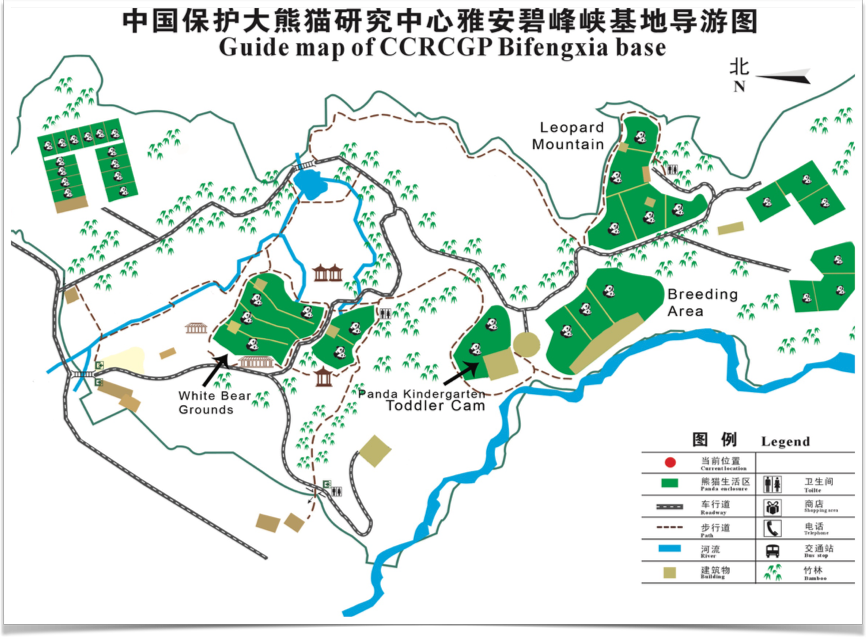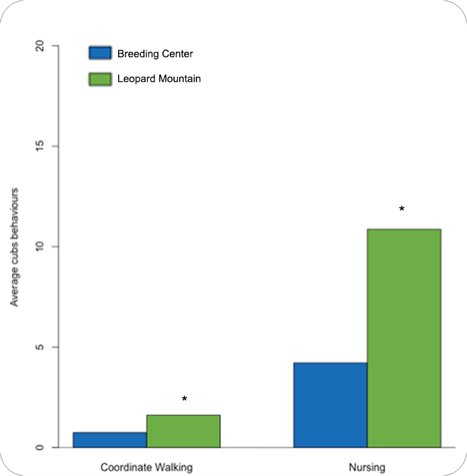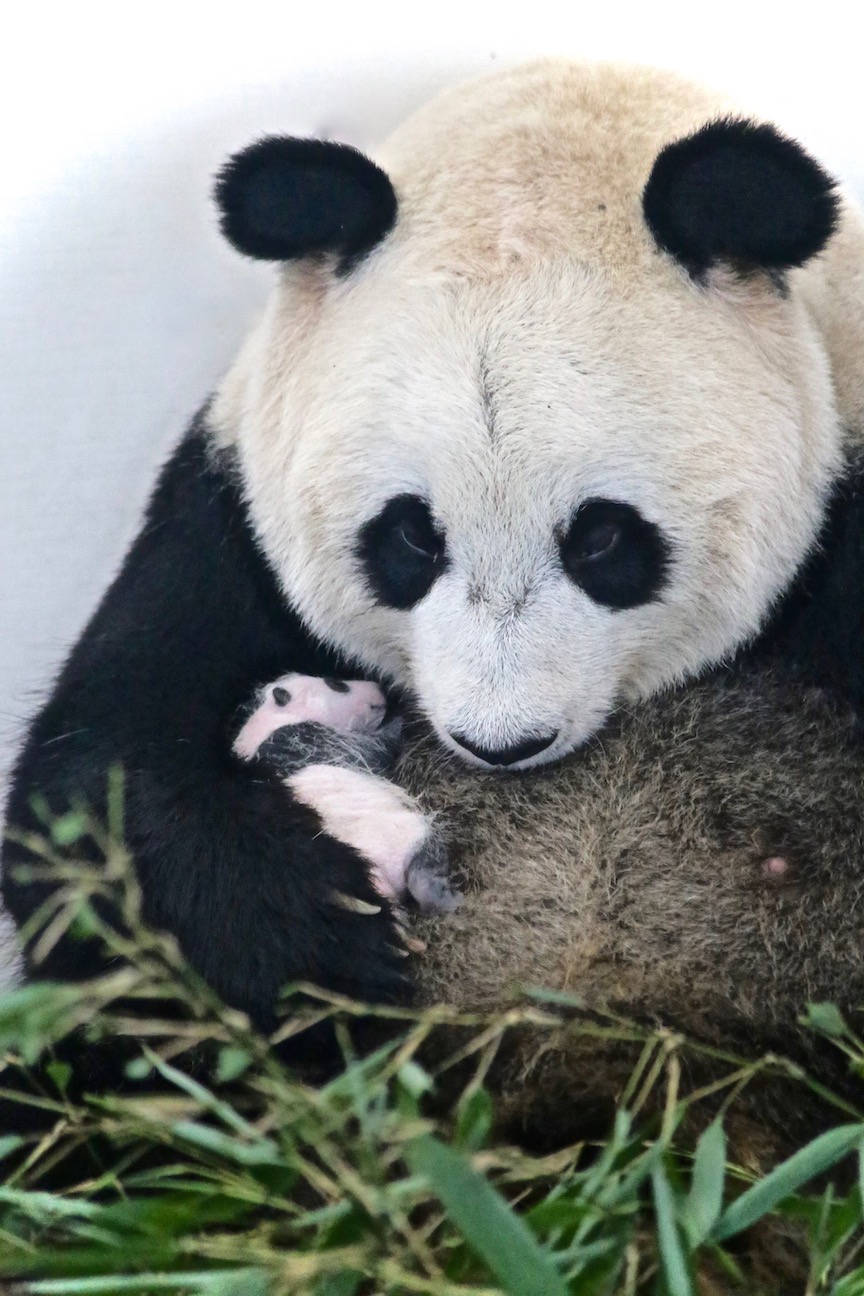Hi everyone!
First of all, I would like to thank you for your interest and support in my project.
For those of you who missed the previous blog and the Memphis conference where Meg and Nate presented some of my preliminary results, here’s brief summary of the project I’m working on (but you can read more in my previous blog here):
I am researching social suppression of maternal care behaviors and affects cub development. In other words, does the presence of a large number of females in the same area during gestation and after birth alters the behavior of mothers and cubs?
(photo mother-cub)
To answer this question, I compared the data of two different mother-cubs groups at the Bifengxia base, one in Leopard Mountain, a low-density female area (up to 2 female neighbors), and the other in the Breeding Center, a high-density area (up to 13 females nearby).
During the Spring Break we went on a boat trip in Newport, Oregon in search of whales (it’s their major migration north season) and dolphins! It was a very interesting trip and allowed us to start the week with even more enthusiasm and to finish analyzing the data concerning the behavior of cubbies gestated under high-density, potentially stressful conditions.

The results are very interesting and I hope you will like them as much as I do!
Our data show the presence of a high number of conspecifics during gestation has influenced the behavior of both mothers and their offspring! In particular, cubs gestated in the breeding center with a high density of females spent less time coordinated walking, which with our data, means that they began walking later than the ones coming from mothers located gestating in low population density areas (Leopard Mountain).

But the result that intrigues me most is that Breeding Center cubs spent less time nursing than the others as well! We still don’t know if this is due to a stress in the babies caused by distracting noises coming from other mothers and cubs around or is due to a lack of maternal care of female (who also may be distracted or stressed by the presence of a large number of conspecifics in the surrounding area). The same number of hours were recorded on each cub and observations were halted if keepers came into the rooms and resumed 10 minutes after keepers had left so this isn’t a confounding factor.

What do you think? Can cubs reduce nursing time because they are worried about having too many pandas in the same area? Or is it more likely a “maternal behavior” where she reduced nursing? Can you think of other explanations?
Let me know your opinion and if you want to help me with this month expenses here’s a link to the GoFundMe campaign! I have already raised $350 toward my rent but need another $350! Thanks for your support!
(photo cubs)


I wonder what the effect is on the panda if it takes in less milk. Less weight gain, of course, lower chances of survival? But the survival rate is quite high.
I also wonder what your trip to see the whales has to do with your study.
Less weight gain would definitely be a side effect of giant panda cubs being less efficient nursers. In humans, poor nutrition during infancy and childhood has been linked to complications, such as a weakened immune system, slower than expected linear growth, shorter than expected height, and difficulties with learning. While these have not been thoroughly studied in giant pandas in a long-term study. We would predict that many of these adverse outcomes would be similar in giant panda cubs who are receiving less than adequate nutrition.
Similar to when we take interns to China, we believe part of performing research in a foreign country is learning about the culture (especially differences in research style) and wildlife in that country. As an international intern from Italy, part of Giulia’s internship is cultural immersion and learning about United States wildlife. We’re lucky enough to be stationed near a world-renowned marine mammal research center through Oregon State’s University Hatfield Marine Center in Newport. Visiting our colleagues at this center, their science education location, and wildlife viewing is always a favorite activity for our international and national interns!